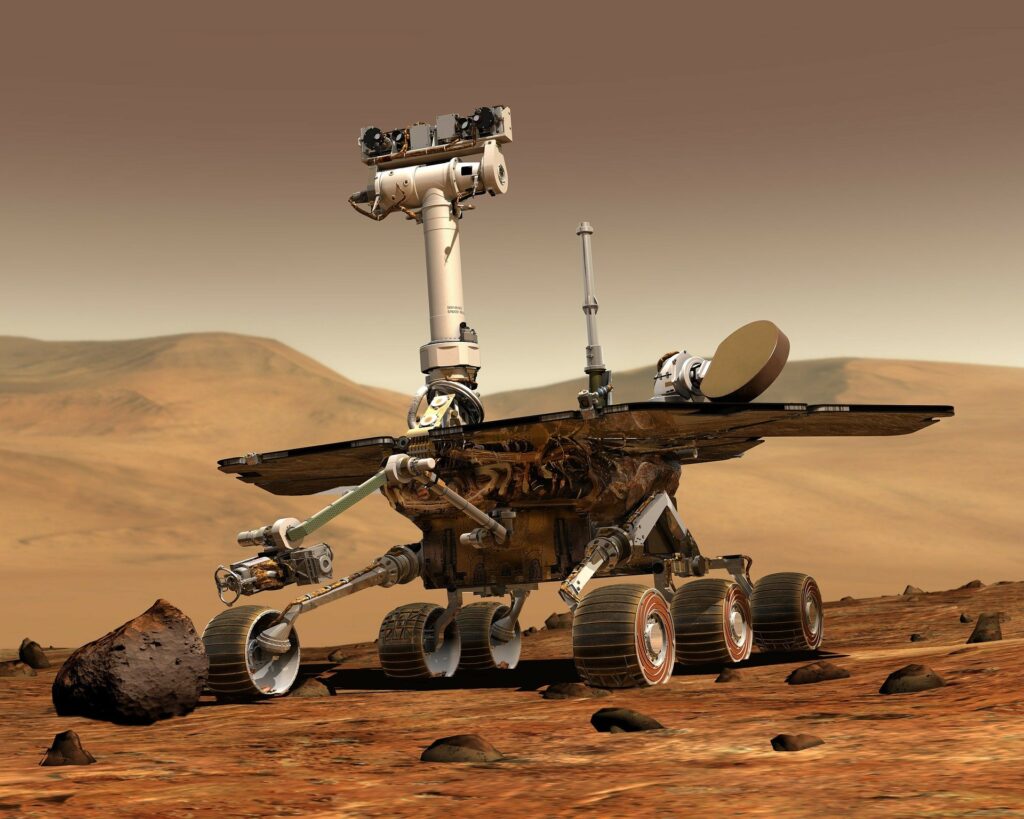Ambitious mission will have to play the promising American rover, a few hours landed on the Martian soil. That of Perseverance can really represent a significant turning point in the history of Mars exploration.
MISSION OBJECTIVE
The objective sees an accurate reconnaissance in one of the most ancient areas of the planet, around the so-called Jazero crater (45 km), the basin of an ancient lake that dominated that portion of the planet’s territory about 3.9 billion years ago: ancestral traces of Martian life could be found, through the study of geology and climate of the planet.
As stated by the head of the Directorate of Scientific Missions of the U.S. space agency, Thomas Zurbuchen, “Perseverance is the most ambitious rover among the robots of NASA, whose scientific objective is to
discover if there was ever life on Mars. So, an agglomeration of know how of NASA and the world scientific community, invested to thoroughly investigate the issue of Martian life.
WHO IS THE PERSEVERANCE ROVER?
Rover built by Nasa laboratory in Southern California and it is under the direction of the latter that Perseverance will carry out the mission. The fifth robot to see and touch the soil and the secrets of the red planet and is now already assisting his older brother Curiosity, launched in 2012 with the Mars Science Laboratory mission.
To “anthropormofizzare” Perseverance and to better define its perception in the imagination of those who admire it from planet Earth, was created also in this case a Twitter profile and that has seen sympathetically say from the “scout”of NASA:”Hello world. My first glimpse of the house I will inhabit forever”
THE LANDING ON THE RED PLANET
Complex and full of tension for the NASA management, however, was the delicate maneuver to be performed during the entrance in the Martian surface (the infamous 7 minutes), managed only by the Perseverance onboard systems and to brake, by means of special retrorockets and other sophisticated technologies, the hypersonic speed of the envelope before the landing phase; an operation that, given the distance from the Earth, is still impossible for the technicians to remotely control. This explains the emotion that the laboratories have felt while monitoring and waiting for the fateful landing on the ground, an emotion that inevitably caused the classic tear to burst from the face, then hidden by the mask. A proud event for our species that can encourage everyone at this time and not just those responsible for the mission.
THE CHARACTERISTICS OF PERSEVERANCE
The size of the robot probe, are similar to those of a long wheelbase off-road vehicle and is equipped with the same dynamic capabilities in order to absorb the roughness of the ground and travel miles in the "red
desert", as well as 6 aluminum wheels wider than Curiosity and with a different design, for better traction.
The weight is about 1025 kg and its soul is actually formed by 3 robotic units, but only one is visible and it would be the external arm that succeeds the “little head” of the rover (the SuperCam). During the nearly 7 months of interplanetary travel, from Earth to Mars, Perseverance protected itself with a large bell-shaped shell, sealed at the bottom by a heat shield, which kept the heat outside the probe, especially during the turbulent entry phase into the Martian atmosphere.
There is also Ingenuity with Perseverance, a scout helicopter weighing just 1.8 kg and developed specifically for the Martian mission, but whose action was limited to a quick, pre-emptive view of the crater
and the area surrounding Perseverance’s reconnaissance zone.
Increasing the chances of life on Mars
An operation that also sees the constant contribution of several European countries, including Italy, with the Italian Space Agency: the third country that contributes the most to the work of ESA.
Perseverance’s perspectives and expectations are therefore wide and deep: data and images with an innovative scientific and historical character at the same time, should be discovered by our terrestrial probe, which will live on Mars until 2030, and then return home and bring with it all that it has documented and collected and thus increase the Earth’s knowledge about the past, present and future of the much desired red planet, hoping that space tourism and new possibilities of life can really materialize in this
direction.
Author:Francesco Carleo
